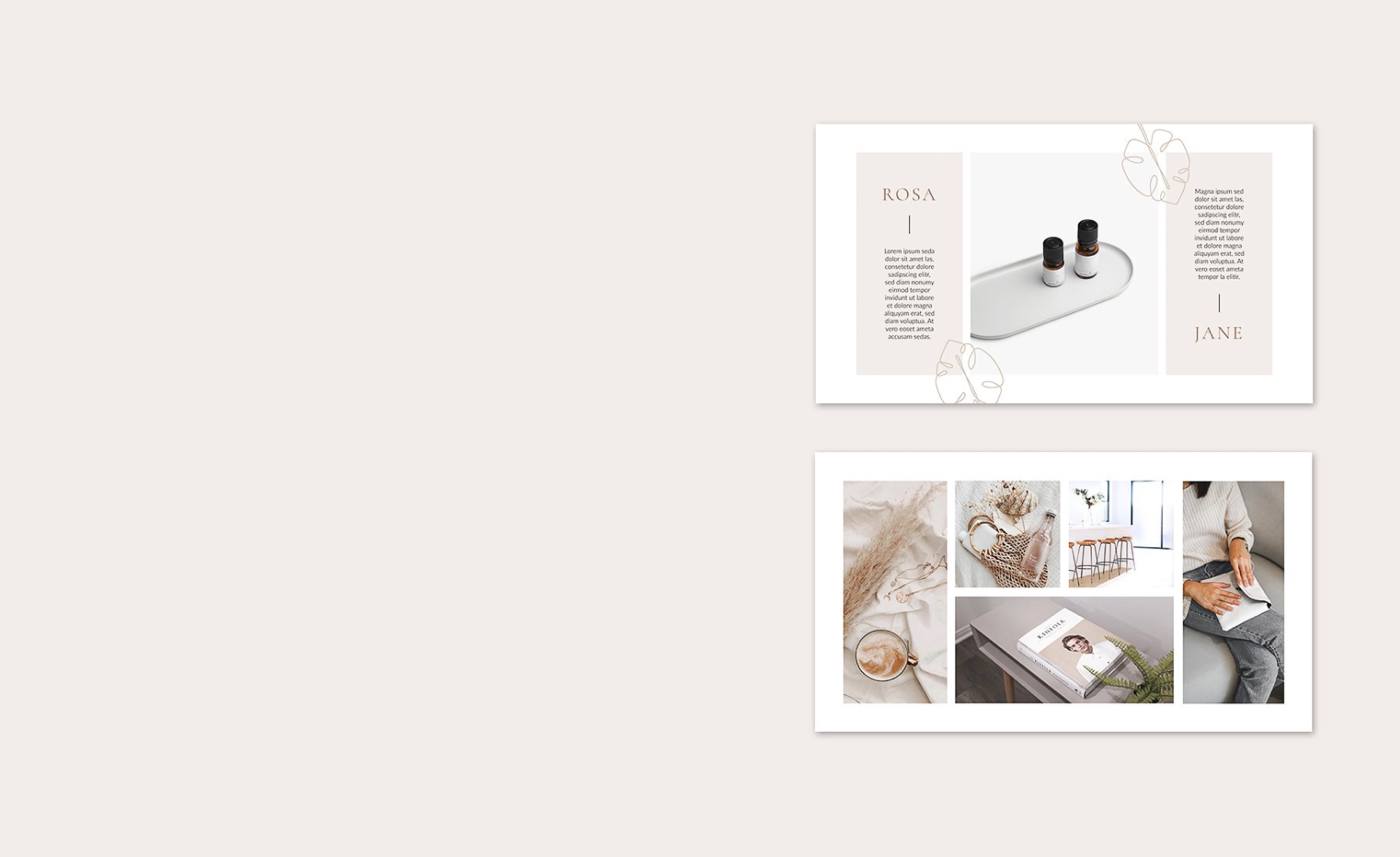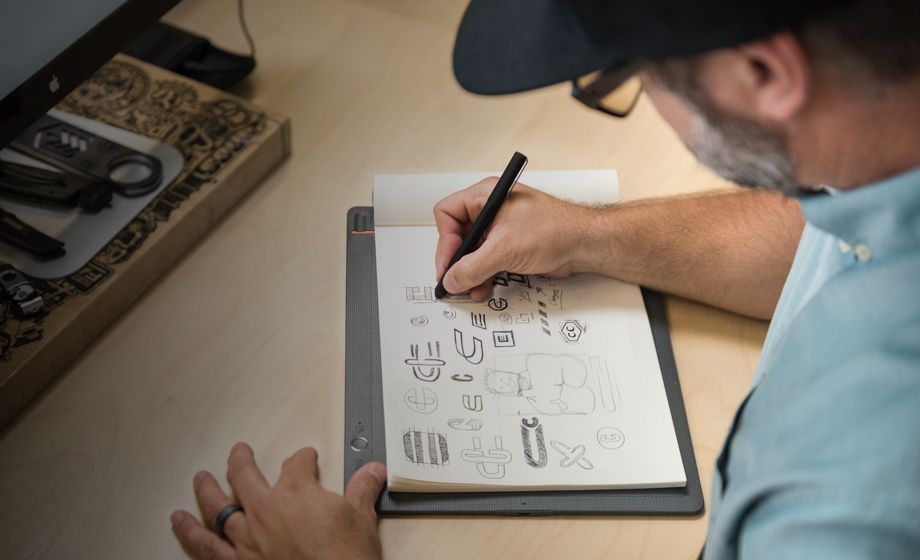Stifttabletts
Mit einem präzisen Stift kannst du auf einem reaktionsschnellen Pad skizzieren, zeichnen und Bilder bearbeiten und deine Werke auf einem Bildschirm begutachten.


Ganz gleich, ob du ein eigenes Logo gestalten oder Techniken im Grafikdesign entwickeln möchtest, um visuell ansprechende Icons, Visitenkarten oder Websites zu erstellen – dieser Leitfaden gibt dir gut nachvollziehbare Tipps, wie du ein besserer Designer wirst, ganz gleich, in welchem Bereich.

Die Gestaltung eines eigenen Logos erfordert umfassende Recherchen. Zunächst einmal solltest du etwas Zeit darauf verwenden, dir klassische Logos im Internet anzuschauen und darauf zu achten, was sie gemeinsam haben. Anschließend legst du ein Moodboard mit Ausdrucken der Logos an, die dir gefallen. So hast du immer vor Augen, was du erreichen möchtest. Bevor du den Computer einschaltest und die Illustrationssoftware aufrufst, mach noch ein paar Ideenskizzen mit Stift und Papier. Du solltest auch die einfachsten Kritzeleien aufbewahren, denn auch sie könnten sich noch als nützlich erweisen. Wenn du ein Logo für eine Marke entwirfst, stelle sicher, dass es zur allgemeinen Identität der Marke passt – von den Schriftarten, die auf Websites verwendet werden, bis hin zur Positionierung der Marke im Markt.
Beim eigentlichen Design des Logos lohnt es sich, die Dinge einfach zu halten. Schließlich sind die berühmtesten Logos täuschend einfach und bleiben dadurch leichter in Erinnerung. Wenn es hervorstechen soll, lohnt es sich zu lernen, wie man individuelle Schriften entwirft und Farben verwendet, die den Blick auf sich ziehen. Wenn dir das zu schwierig erscheint, kannst du mithilfe einer Online-Software ein einfaches Logo für deine persönliche Marke oder dein Startup erstellen.

Bei der Gestaltung eines Briefkopfs ist Einfachheit gefragt. Der Briefkopf sollte an die Markenidentität angelehnt sein und die gleichen Designs und Farben wie auf Websites und Visitenkarten verwenden.
Wichtig ist die Verwendung vektorbasierter Designsoftware-Tools. Sie ermöglichen eine flexible Skalierung der Designs ohne Qualitätsverlust. Wichtige Grafikdesign-Techniken wie Hierarchie und Ausrichtung spielen ebenfalls eine Rolle – du musst entscheiden, ob ein Briefkopf in erster Linie aus einem Logo oder einem Firmennamen bestehen soll, und ihn entsprechend positionieren.
Wichtig ist, vor Augen zu haben, dass ein Brief eine bestimmte Botschaft übermitteln soll. Der Briefkopf spielt da eine sekundäre, wenn auch wichtige Rolle. Behalte das im Hinterkopf und versuche, nicht zu viel Farbe zu verwenden und die Anzahl von Elementen oben auf der Seite möglichst gering zu halten. Kontaktdaten können stets unten auf der Seite platziert werden, um auf einer A4-Seite möglichst viel Platz zu lassen.

Visitenkarten sind auch im digitalen Zeitalter noch immer unverzichtbar. So verlockend es sein mag, einen Online-Service damit zu beauftragen, eine Visitenkarte für dich zu erstellen, solltest du dies selbst tun, um dich und deine Marke noch ansprechender zu gestalten.
Dabei gibt es ein paar grundlegende Regeln zu beachten. Achte darauf, dass Text 5 mm vom Rand entfernt ist, dass Schrift eine Mindestgröße hat, damit Details einfach zu lesen sind, und beschränke dich auf Grundfarben, um das Design nicht zu überladen. Ein Rasterdesign ist ein guter Anfang, weil sich so einfach eine Hierarchie erreichen lässt. Die Größe der Visitenkarte sollte idealerweise der einer Kreditkarte entsprechen, damit sie einfach in eine Brieftasche gesteckt werden kann.
Sprich nach Fertigstellung deines Entwurfs mit dem Druckservice, den du beauftragen willst, über besondere Techniken, mit denen du das Aussehen deiner Visitenkarte verändern könntest. Durch Stanzungen, Folienbeschichtungen oder abgerundete Ecken kannst du dafür sorgen, dass sich deine Visitenkarte von anderen abhebt.

Webdesign ist ein ganz eigener Berufszweig. Das soll dich jedoch nicht davon abhalten, die Grundlagen zu erlernen und zu versuchen, eine eigene Website zu erstellen, sei es für einen Kunden oder für deine eigene Marke.
Das Webdesign entwickelt sich rasant weiter, aber es gibt ein paar einfache Grundregeln. Mach dir klar, was du mit deiner Website erreichen willst, bevor du mit der Gestaltung anfängst. Dazu brauchst du eine klare, einfache Zielseite (Landing Page) mit offensichtlichen Handlungsaufforderungen – besonders wichtig, wenn die Website etwas verkaufen soll. Es lohnt sich auch, aktuelle Webdesign-Trends zu recherchieren. Wenn du weißt, dass „brutalistische“ und minimalistische Looks gerade populär sind, kannst du dich inspirieren lassen und selbst entscheiden, ob deine Website wie andere aussehen oder sich von der Masse abheben soll.
Es gibt eine Vielzahl von Online-Tools, die dir beim Erstellen einer Website helfen, häufig mit fertigen Vorlagen, mit denen du eine Vorstellung von der Website bekommst, die du gerade erstellst. Sie sind von unschätzbarem Wert und bilden die Grundlage jeder guten Website. Doch selbst mit solch leistungsstarken Tools lohnt es sich, die Farbtheorie sowie Designgrundlagen wie das „F-Format“ zu kennen. Letzteres besagt, dass die wichtigsten Informationen einer Website in Form des Buchstabens F angeordnet sein sollten, weil diese dem Verlauf entspricht, mit dem Benutzer eine Bildschirmseite mit den Augen scannen.
Icons werden in Gruppen erstellt und müssen deshalb gut miteinander funktionieren. Dazu ist es wichtig, mit einfachen Formen zu beginnen – ein Icon sollte aus Kreisen, Dreiecken oder Vierecken gezeichnet werden, bevor es weiter ausgearbeitet wird.
Wenn man Designs innerhalb eines bestimmten Rasters und eines dedizierten Randes beginnt, ist gewährleistet, dass jedes Icon zunächst ein einheitliches Aussehen hat. Dann geht es darum, deine Papierskizzen mithilfe von Designsoftware zum Leben zu erwecken. Hier kommt es auf Einheitlichkeit an. Diese kann beispielsweise darin bestehen, allen Icons ein bestimmtes Merkmal wie eine abgeschrägte Ecke oder eine Kurve hinzuzufügen, als Hinweis, dass sie zusammengehören. Es bietet sich an, auf von Hand gezeichnete Kurven zu verzichten und diese stattdessen mithilfe von Software hinzuzufügen, um zu gewährleisten, dass sie stets perfekt sind.
Da Icons in der Regel klein sind, vor allem auf Smartphone-Bildschirmen, ist es wichtig, sie pixelgenau auszurichten. Nicht richtig ausgerichtete Kanten eines Icons lassen dieses unförmig und schlecht zusammengesetzt wirken.
Wie bei jedem guten Design ist auch hier Einfachheit oberstes Gebot, und das gilt umso mehr für Icons. Verschnörkelte Designs mit übermäßig vielen Details sind schwer erkennbar und lassen die Icons überladen aussehen.

Eine visuelle Identität sollte sich durch die gesamte Marke ziehen, angefangen bei der Website über Visitenkarten und Logos bis hin zu Farbschemata und Schriftarten. Bevor du dich an die Gestaltung all dieser Elemente machst, solltest du dich darüber informieren, welche Menschen mit der betreffenden Marke interagieren und was die Marke erreichen möchte. Die Antworten auf diese Fragen verschaffen dir eine gute Grundlage für das Erstellen einer visuellen Identität. Sie verraten dir, ob das Erscheinungsbild eher seriös sein sollte oder verspielt, ob eher modern oder traditionell.
Wichtig ist, dass eine visuelle Identität einheitlich ist. Das bedeutet, über alle Aspekte hinweg die gleichen Farben zu verwenden und zu wissen, dass unterschiedliche Farben unterschiedliche Emotionen auslösen können. Wenn eine Marke Apps für psychische Gesundheit entwickelt, ist ein beruhigendes Blau beispielsweise besser geeignet als ein aufdringliches Rot. Bei den Schriftarten sollten maximal zwei verwendet werden, und diese dann im gesamten Design. Sie sollten einander ergänzen und durchgängig für die gleichen Handlungsaufforderungen auf einer Website, in einem Briefkopf oder auf einer Visitenkarte verwendet werden.
Achte darauf, dass alle online oder in Werbematerialien verwendeten Bilder das Leitbild der Marke und die Menschen dahinter vermitteln. Eine gut durchdachte visuelle Identität kann schnell durch Bilder ruiniert werden, die nicht zur Marke insgesamt passen.
Was immer du auch gestaltest, mit einem Wacom Cintiq hast du alles unter Kontrolle. Lebendige Farben, scharfe Details in HD und ein ergonomisches Design in Verbindung mit dem superreaktiven Pro Pen 2 ermöglichen ein natürliches Zeichengefühl und sorgen dafür, dass du deine Designideen weiter perfektionieren kannst. Die Ergebnisse sprechen für sich selbst.
Empfohlenes Produkt

Wacom Cintiq 16
Zeichnen, entwerfen und kreieren direkt mit einem präzisen Stift auf einem hochauflösenden Bildschirm.

Mit einem präzisen Stift kannst du auf einem reaktionsschnellen Pad skizzieren, zeichnen und Bilder bearbeiten und deine Werke auf einem Bildschirm begutachten.

Zeichne, entwerfe und kreiere direkt mit einem präzisen Stift auf einem hochauflösenden Bildschirm.

Schreibe mit einem Stift auf Papier und verwandle deine handschriftlichen in digitale Notizen.

Mit einem Wacom Eingabestift kannst du auf deinem mobilen Gerät schreiben und handschriftlich Notizen machen.
Wacom verfolgt die Vision, Menschen und Technologie durch natürliche Schnittstellentechnologien enger zusammenzubringen. Diese Vision hat das Unternehmen zum weltweit führenden Hersteller interaktiver Stifttabletts und -Displays sowie digitaler Eingabestifte und Lösungen für die Speicherung und Verarbeitung digitaler Signaturen gemacht. Die fortschrittliche Technologie der intuitiven Eingabegeräte von Wacom wurde bei einigen der aufregendsten Werke in den Bereichen Digital Art, Film, Spezialeffekte, Mode und Design weltweit eingesetzt und bietet Geschäfts- und Privatanwendern als führende Schnittstellentechnologie die Möglichkeit, ihre Persönlichkeit zum Ausdruck zu bringen. Wacom wurde 1983 gegründet und ist ein globales Unternehmen mit Sitz in Japan (Tokyo Stock Exchange 6727) mit weltweiten Tochtergesellschaften und Niederlassungen zur Bereitstellung von Marketing und Vertrieb in über 150 Ländern.